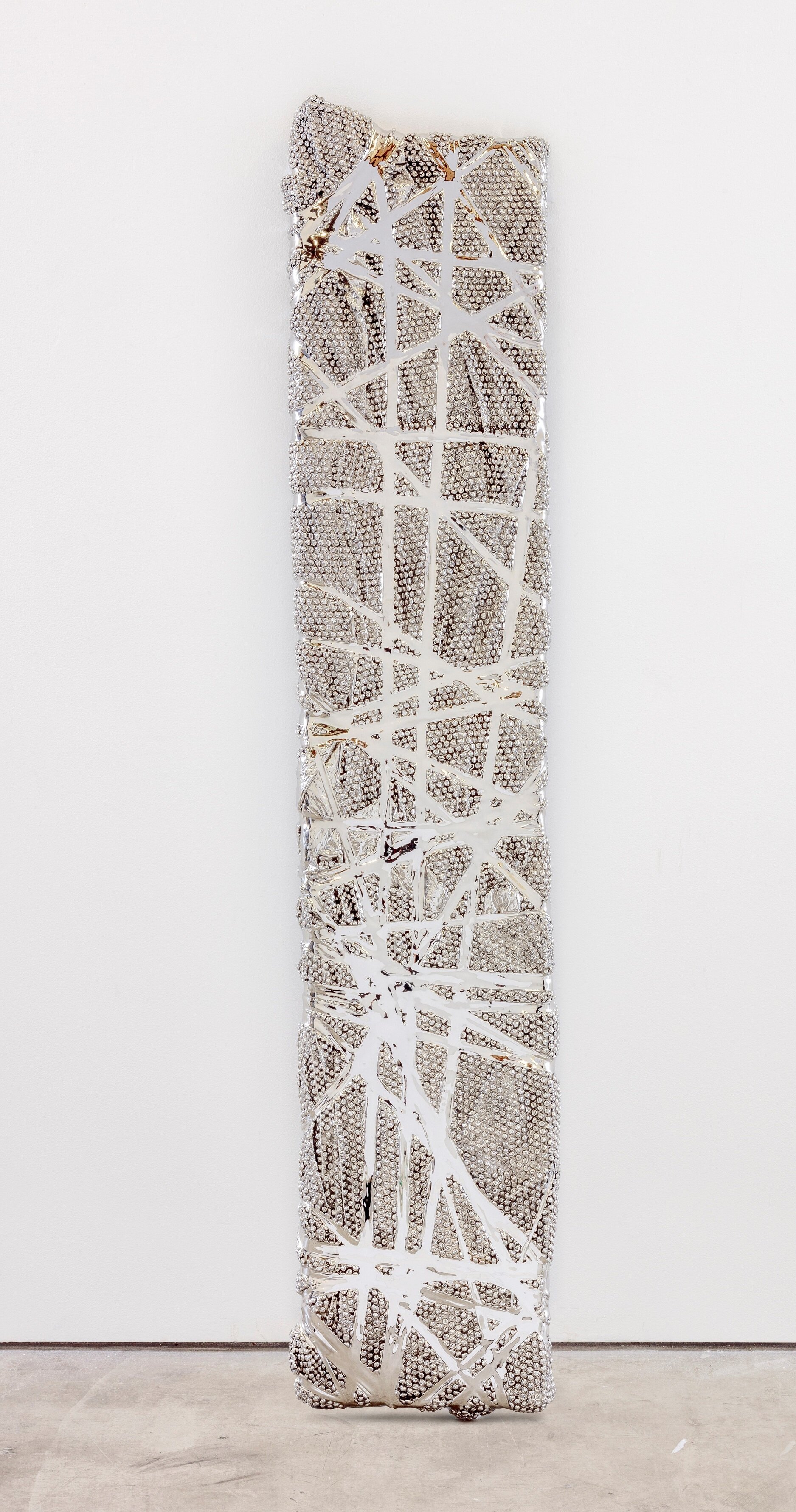Center of the Universe | Joel Morrison
Aug 30th - Nov 2nd, 2018
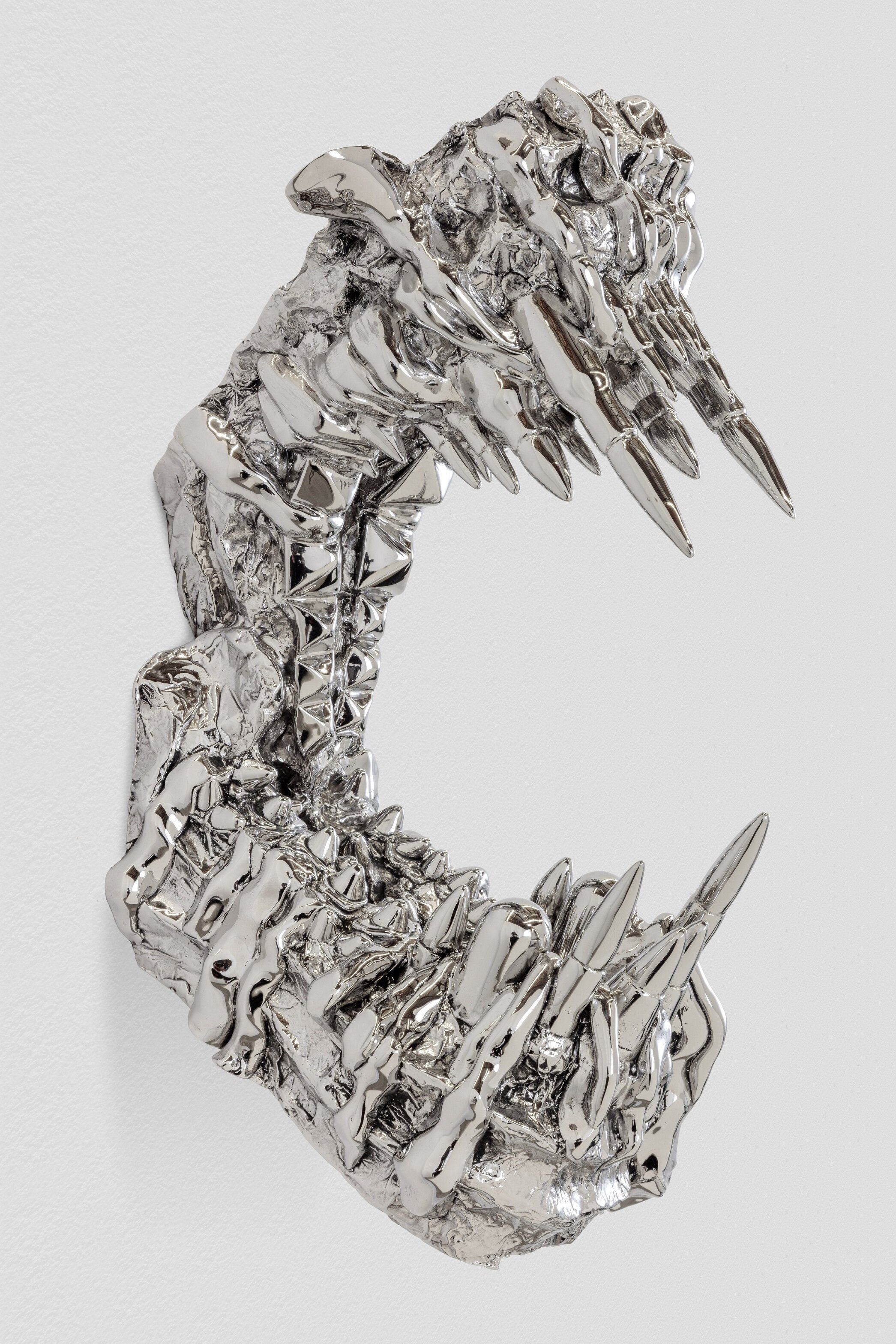
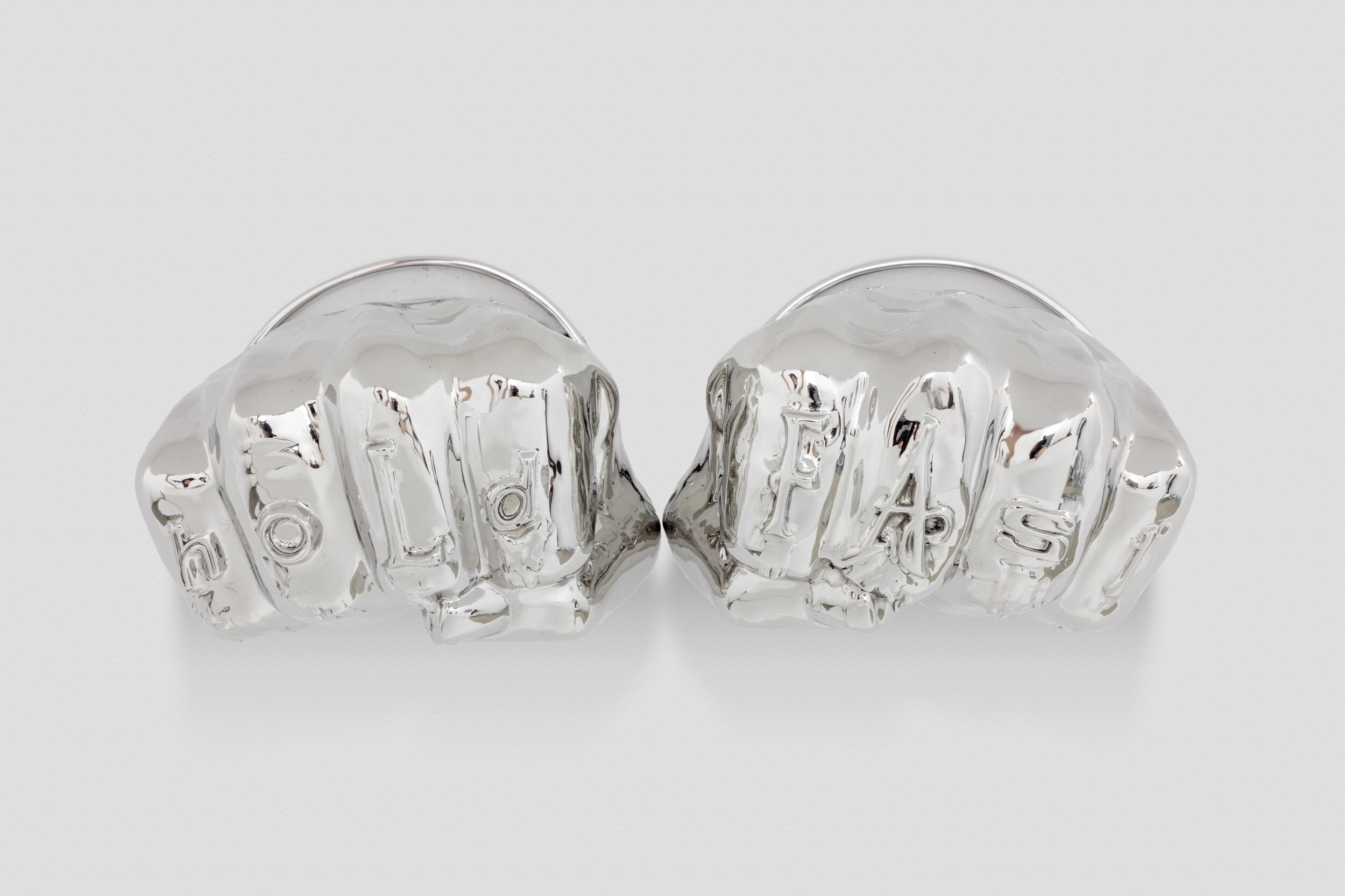
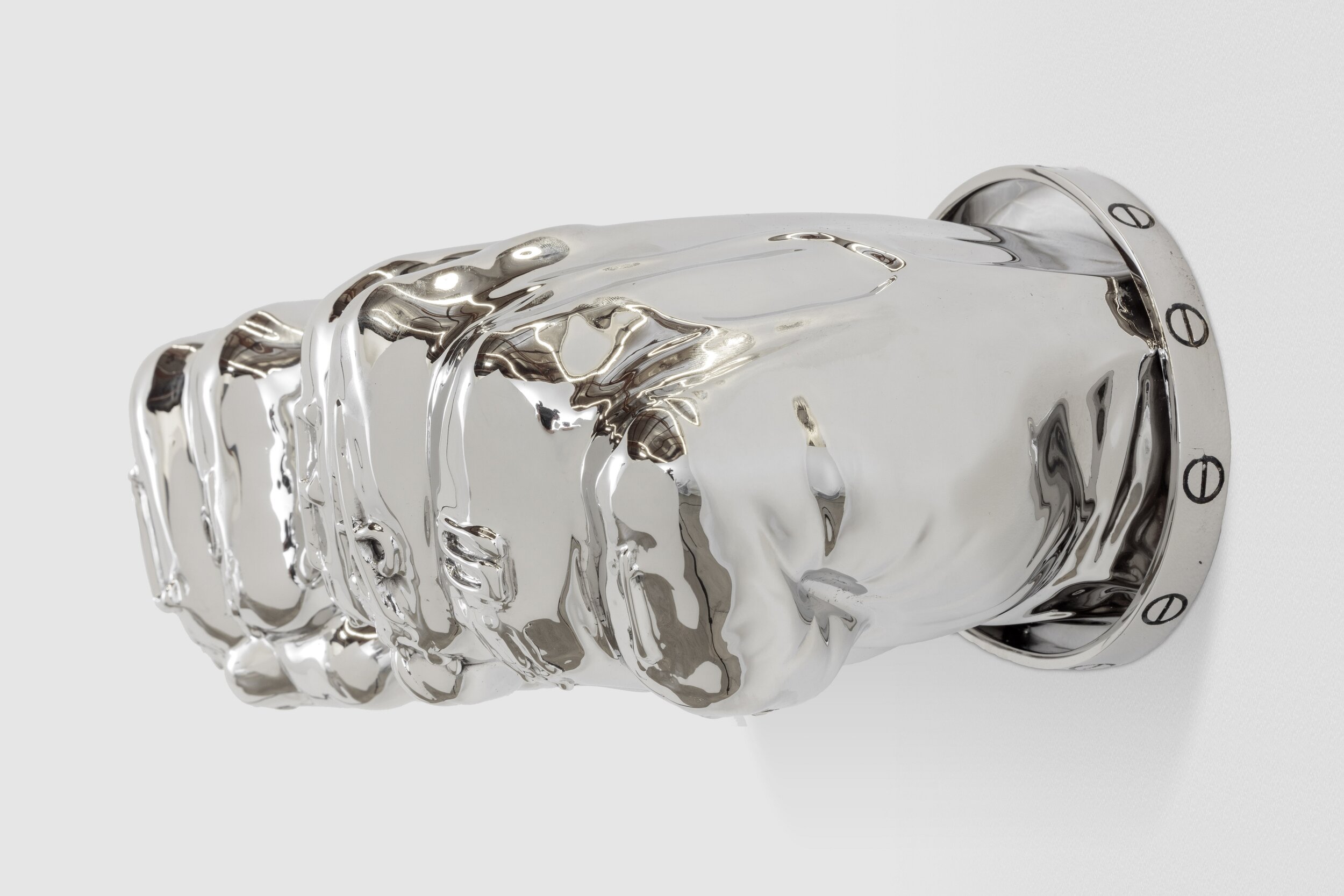
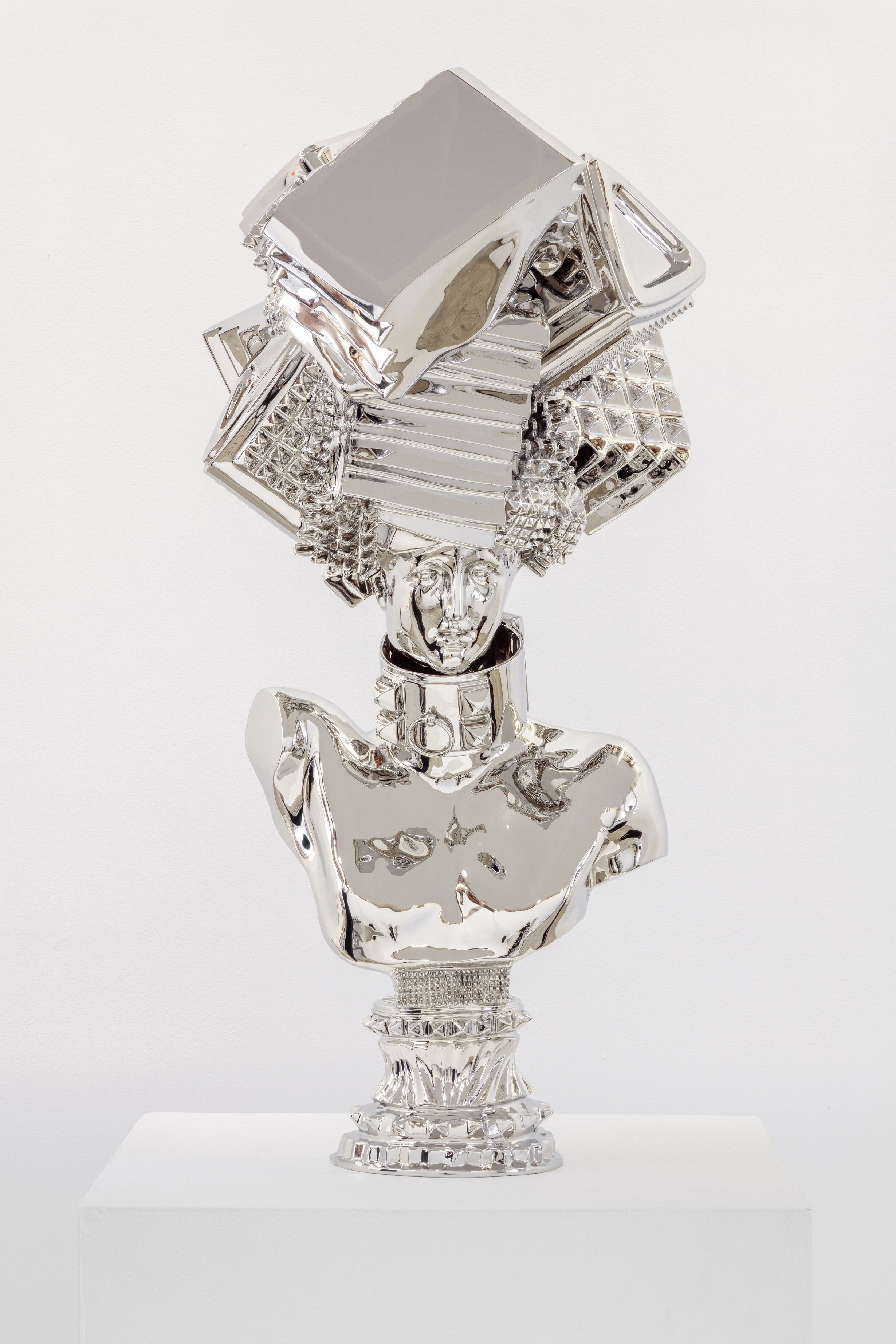
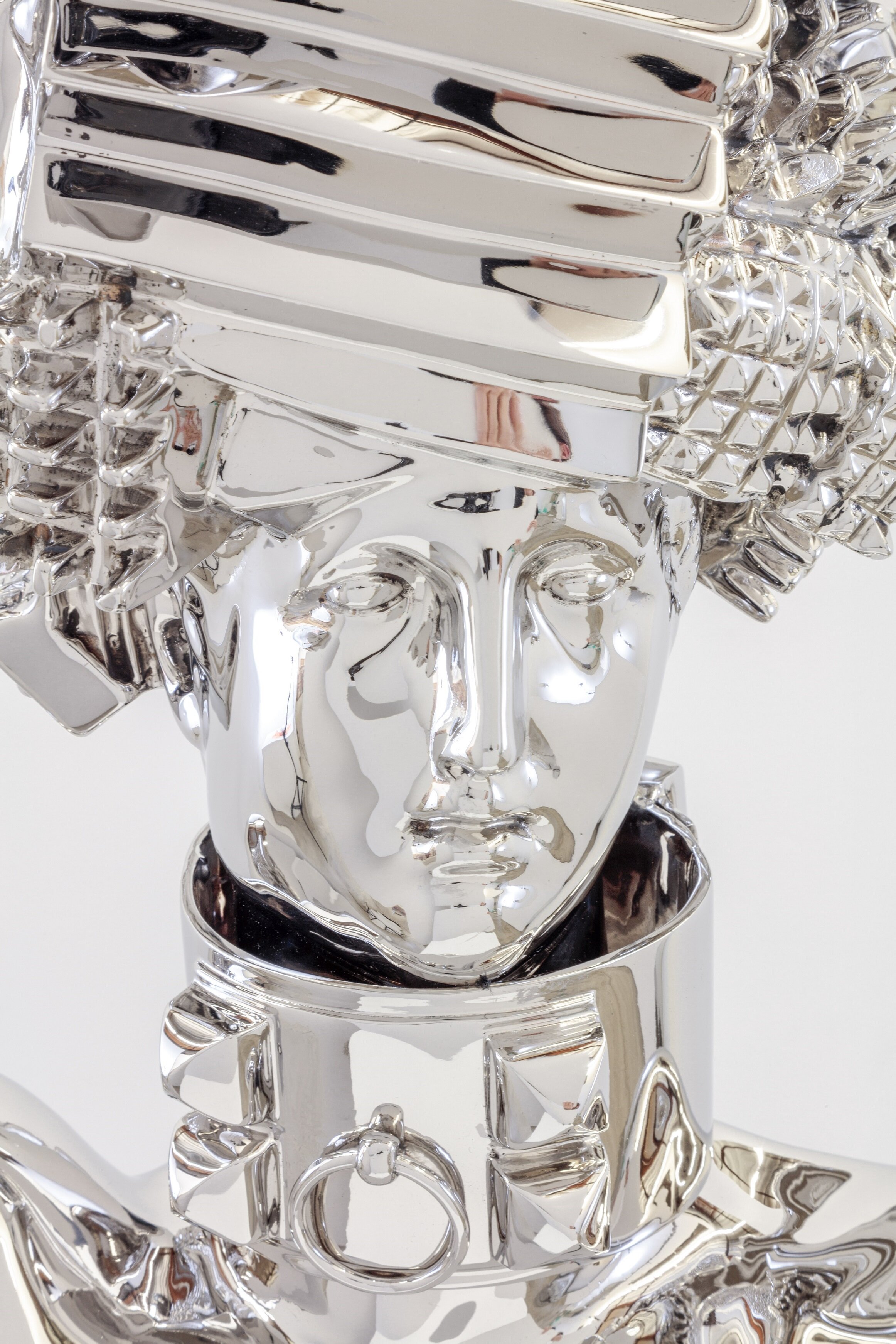
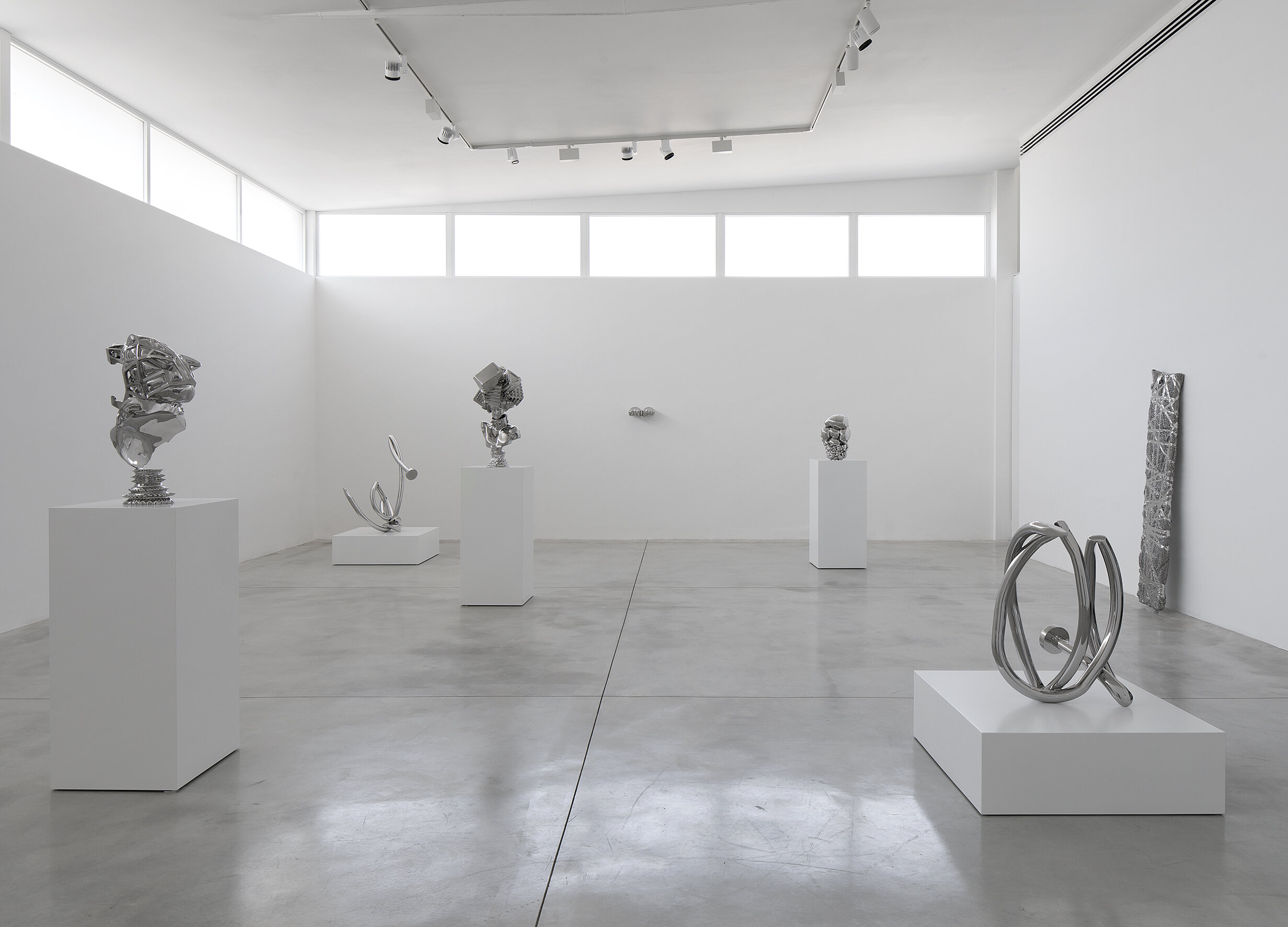
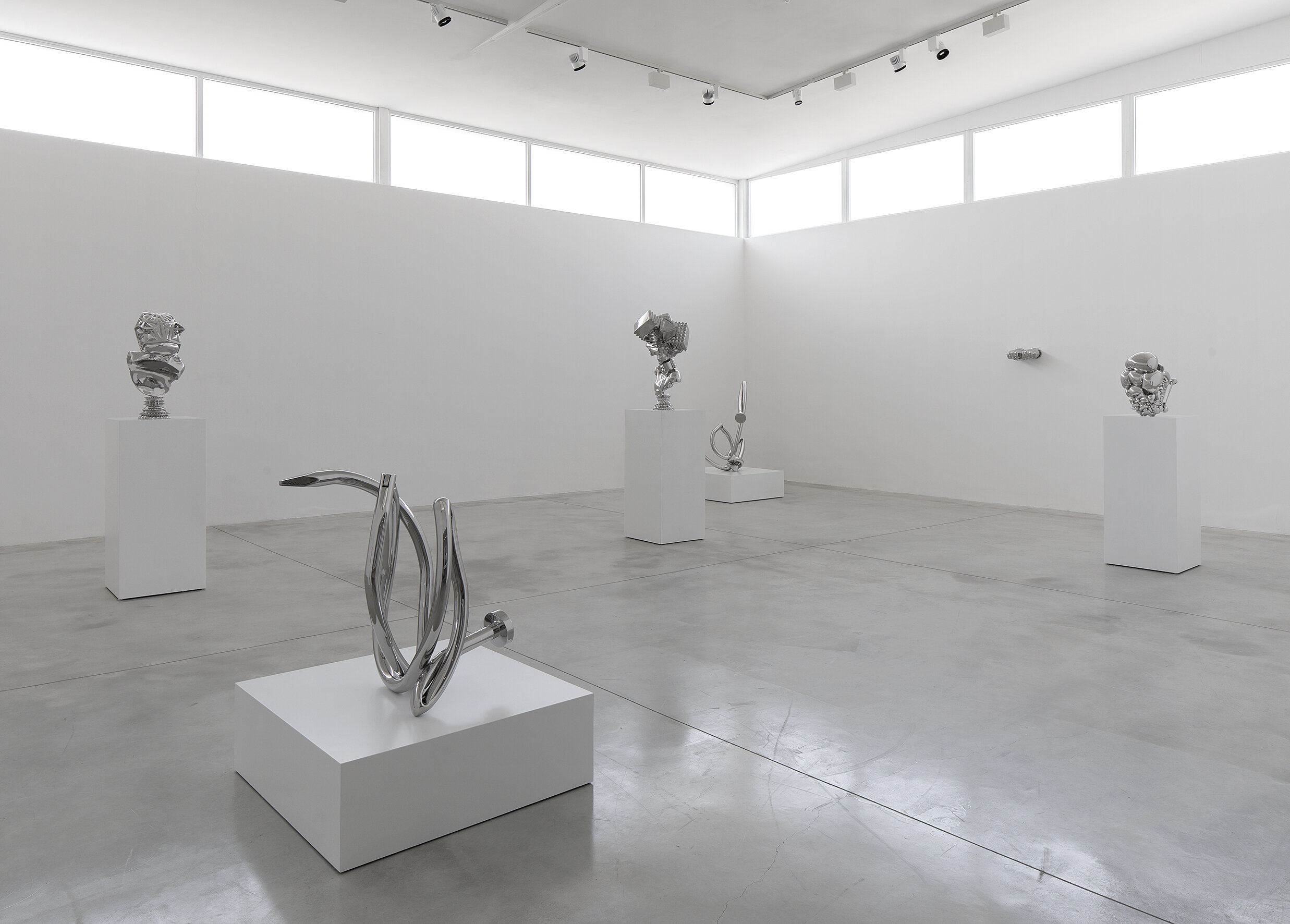
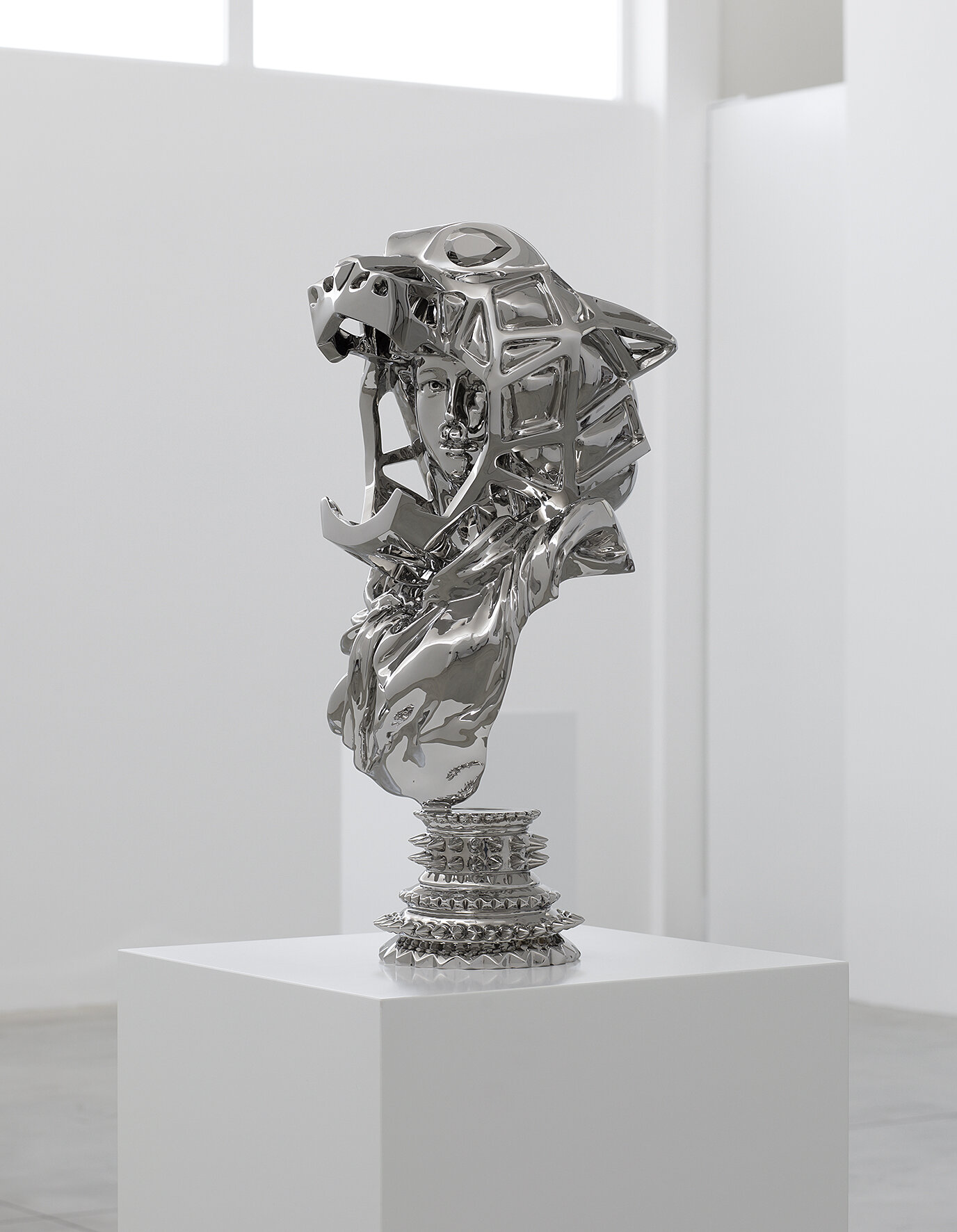
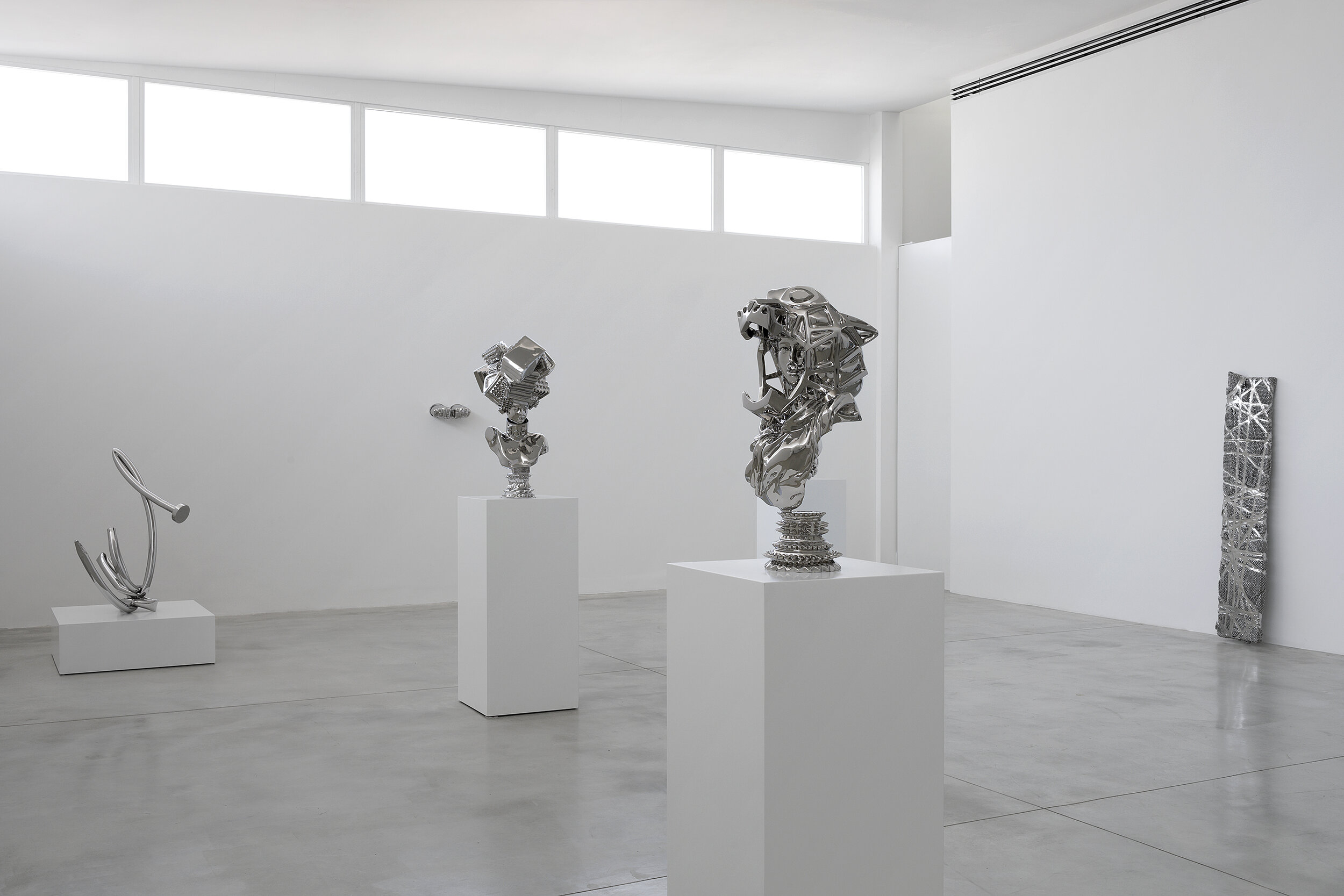
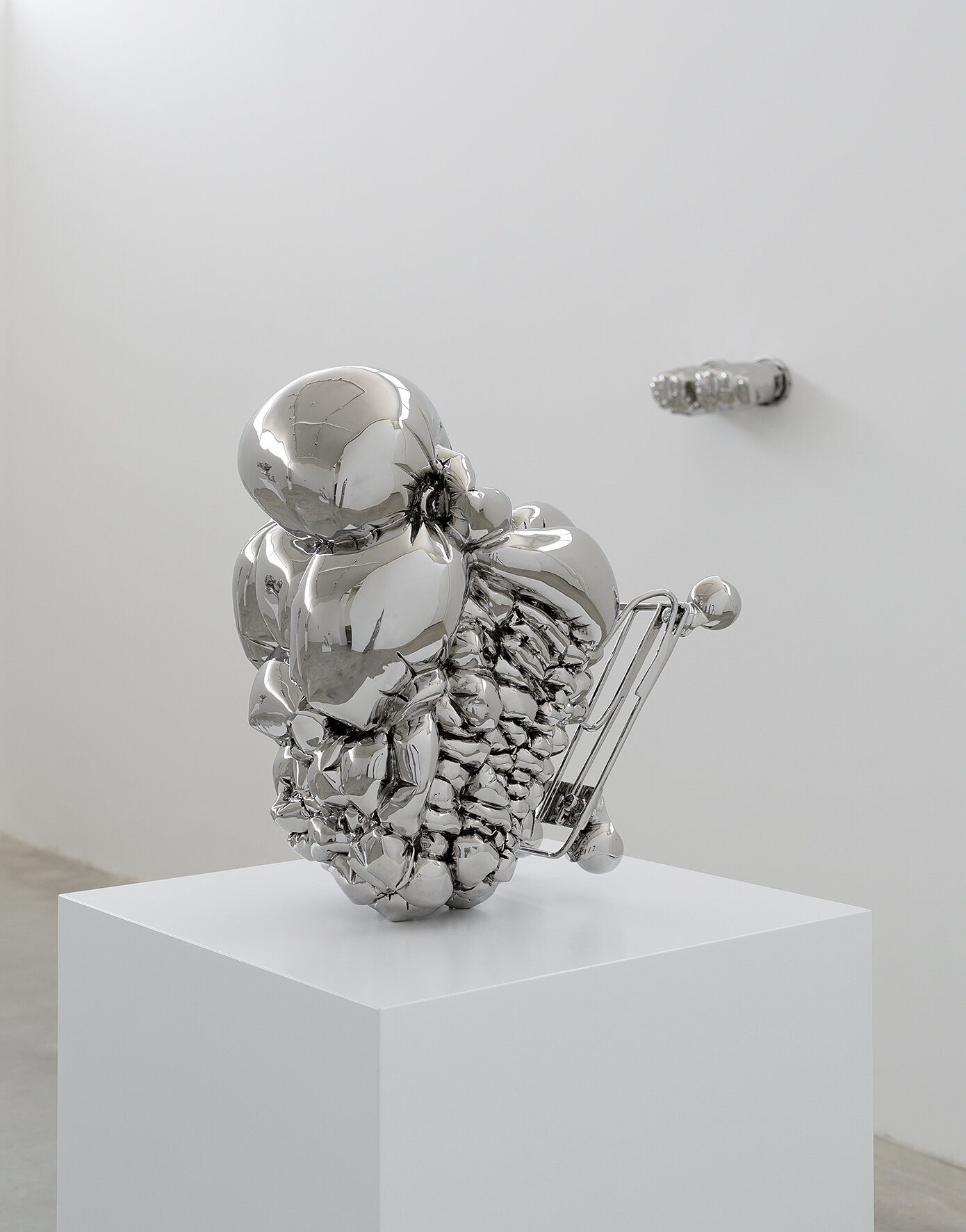
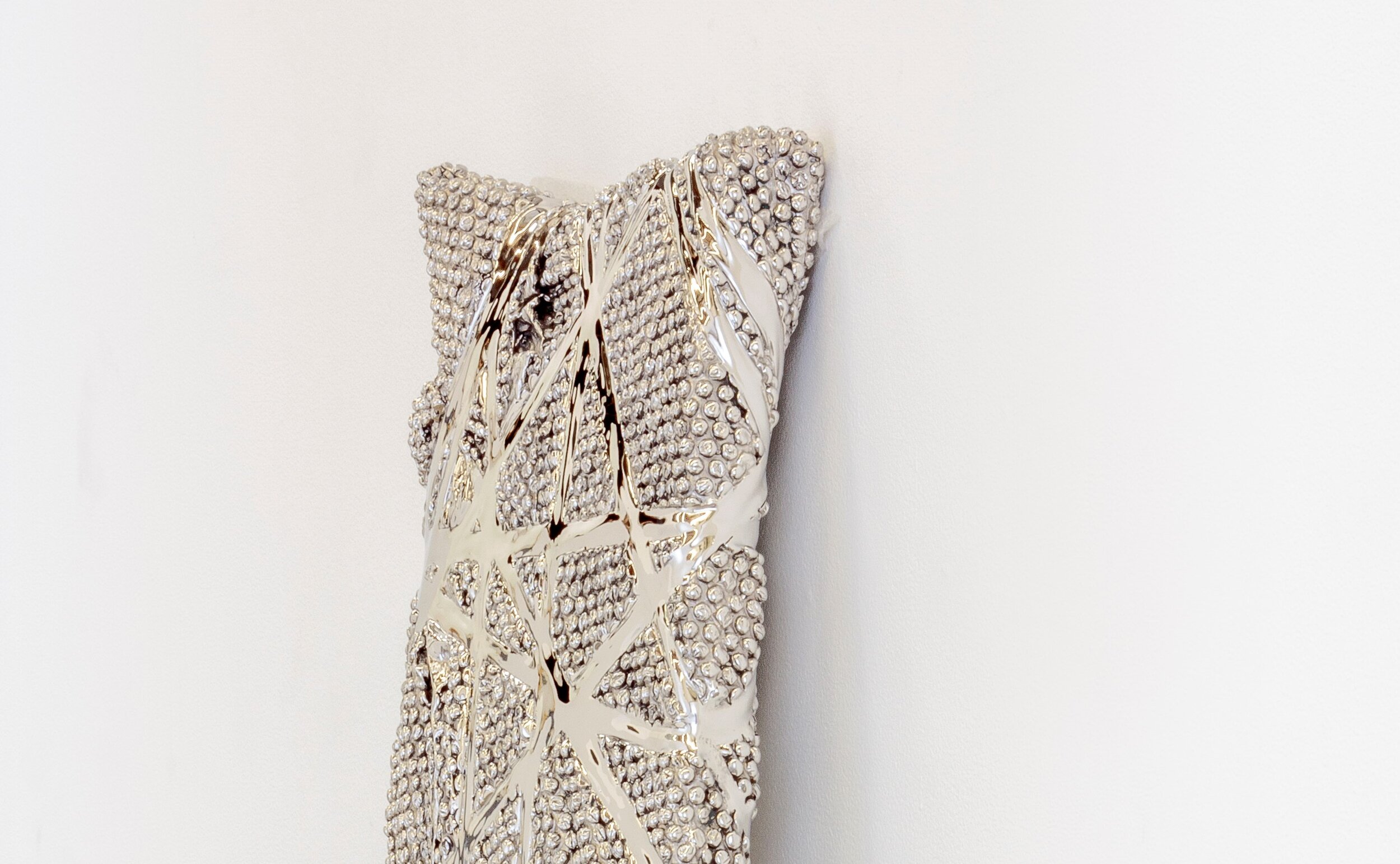
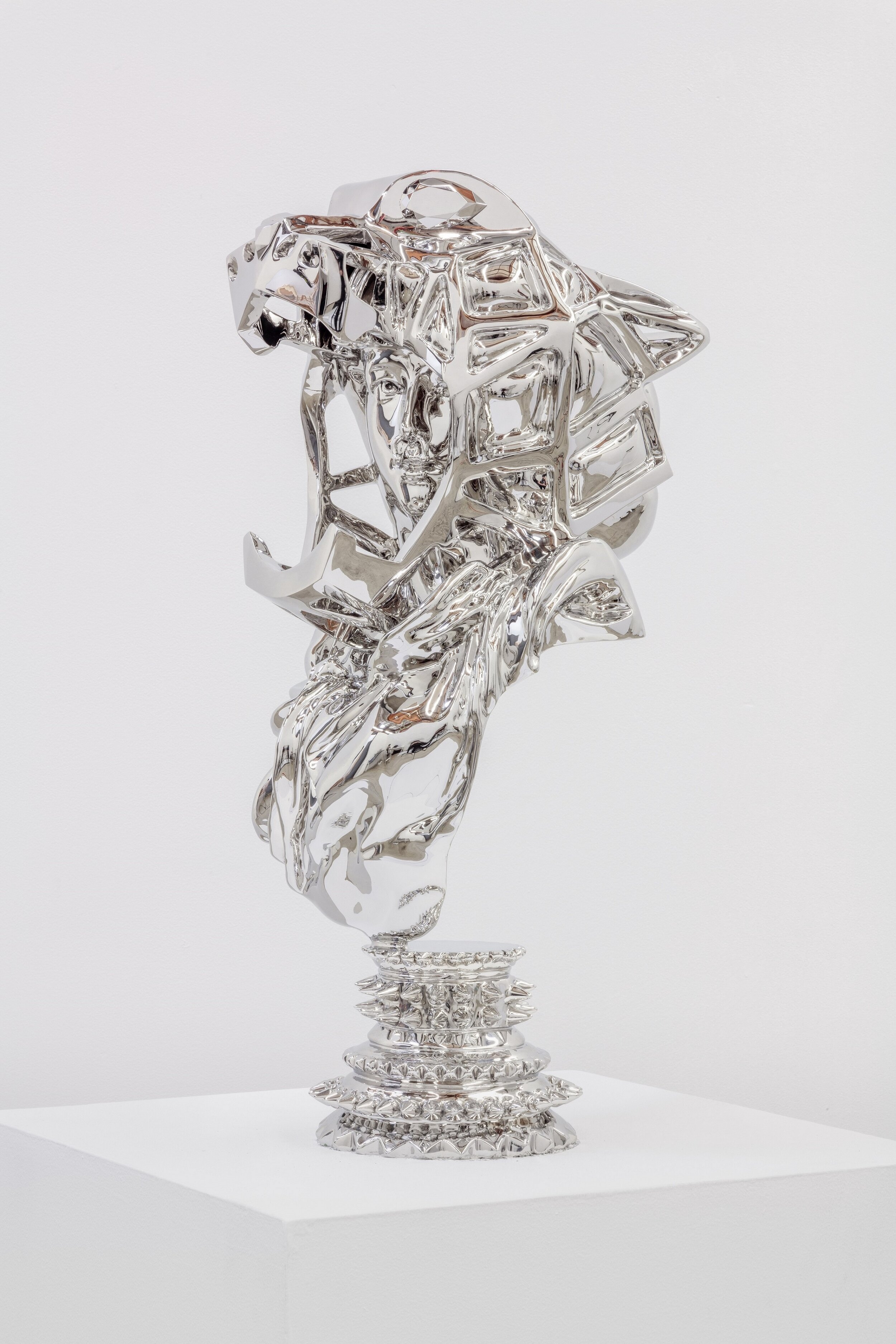
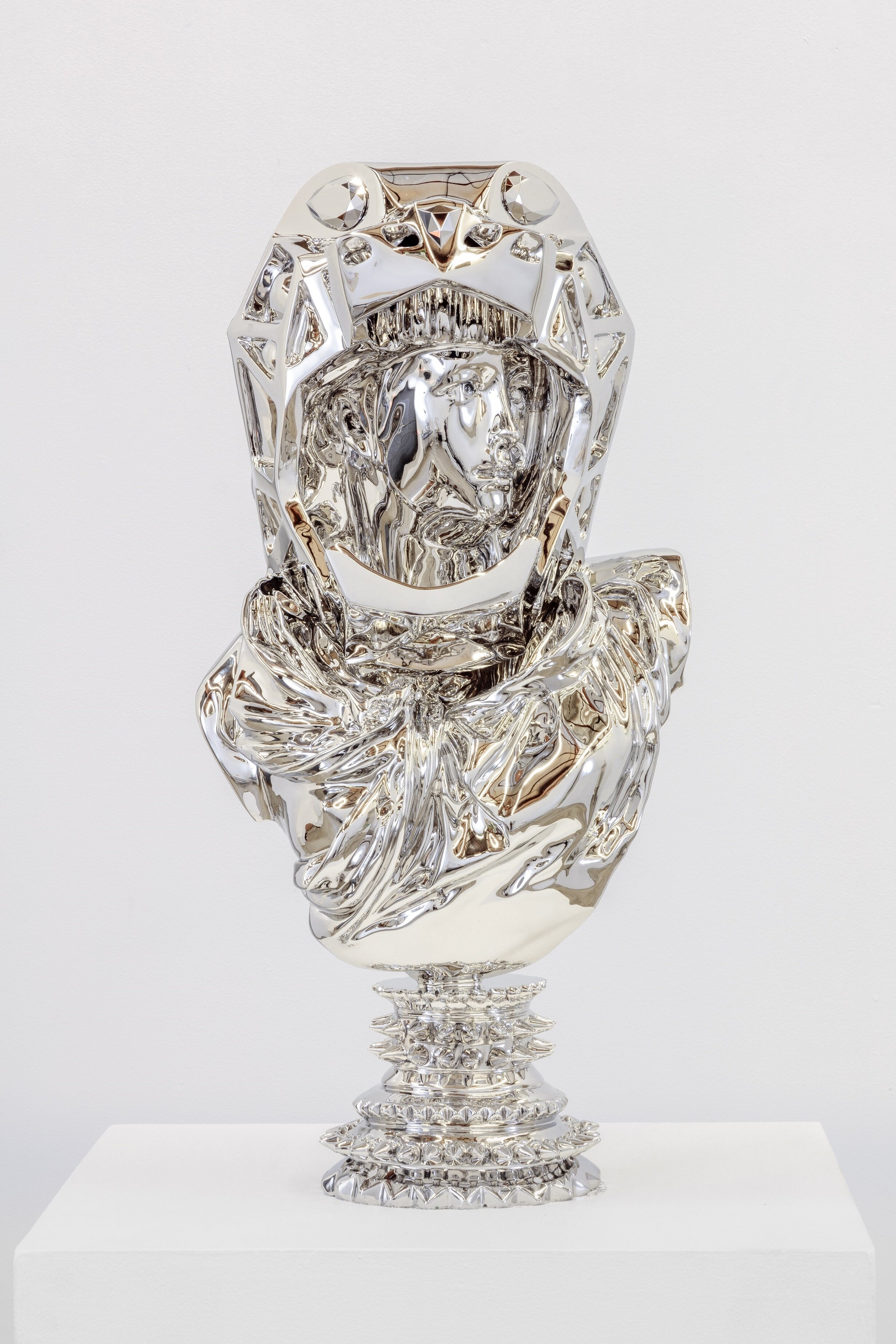
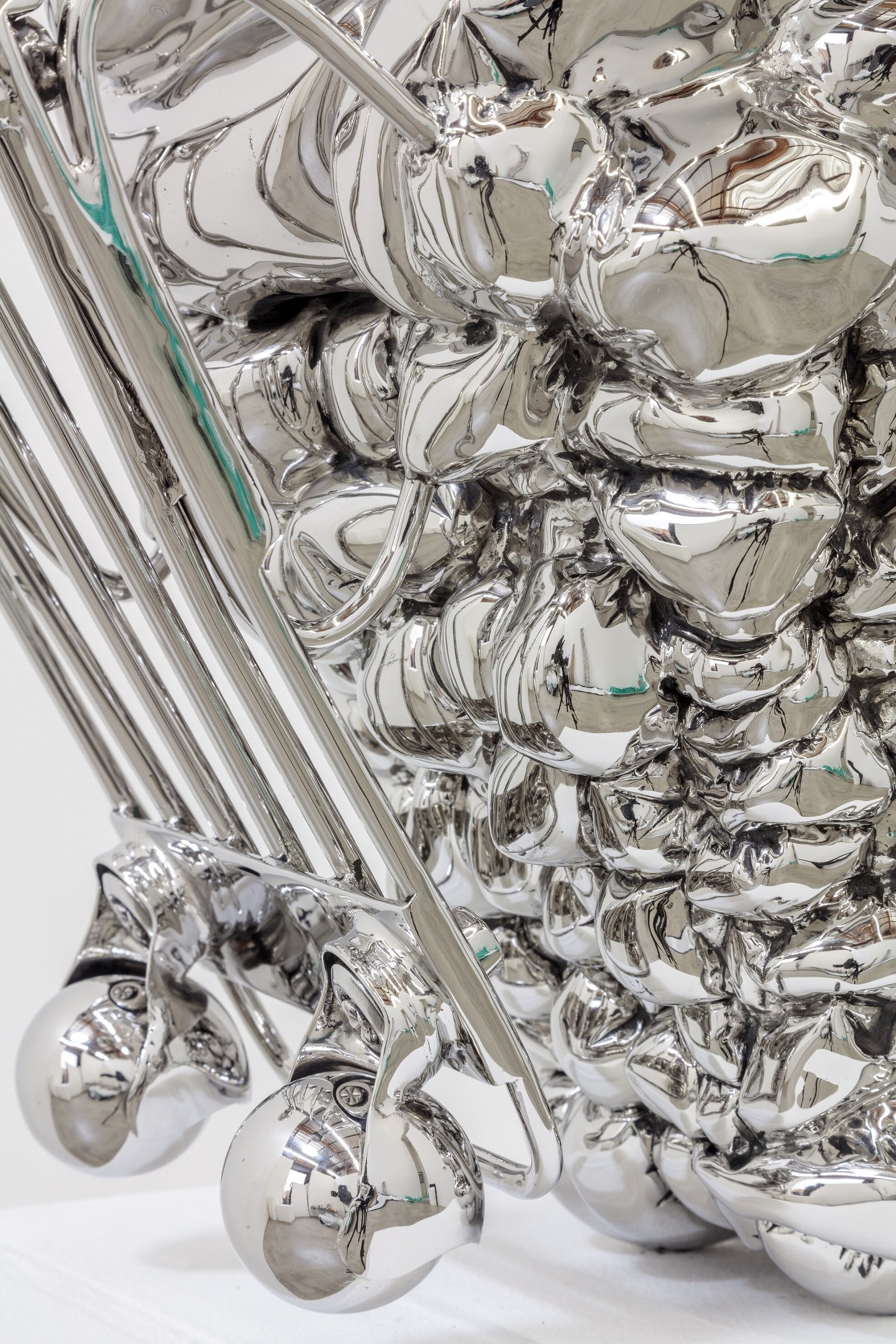
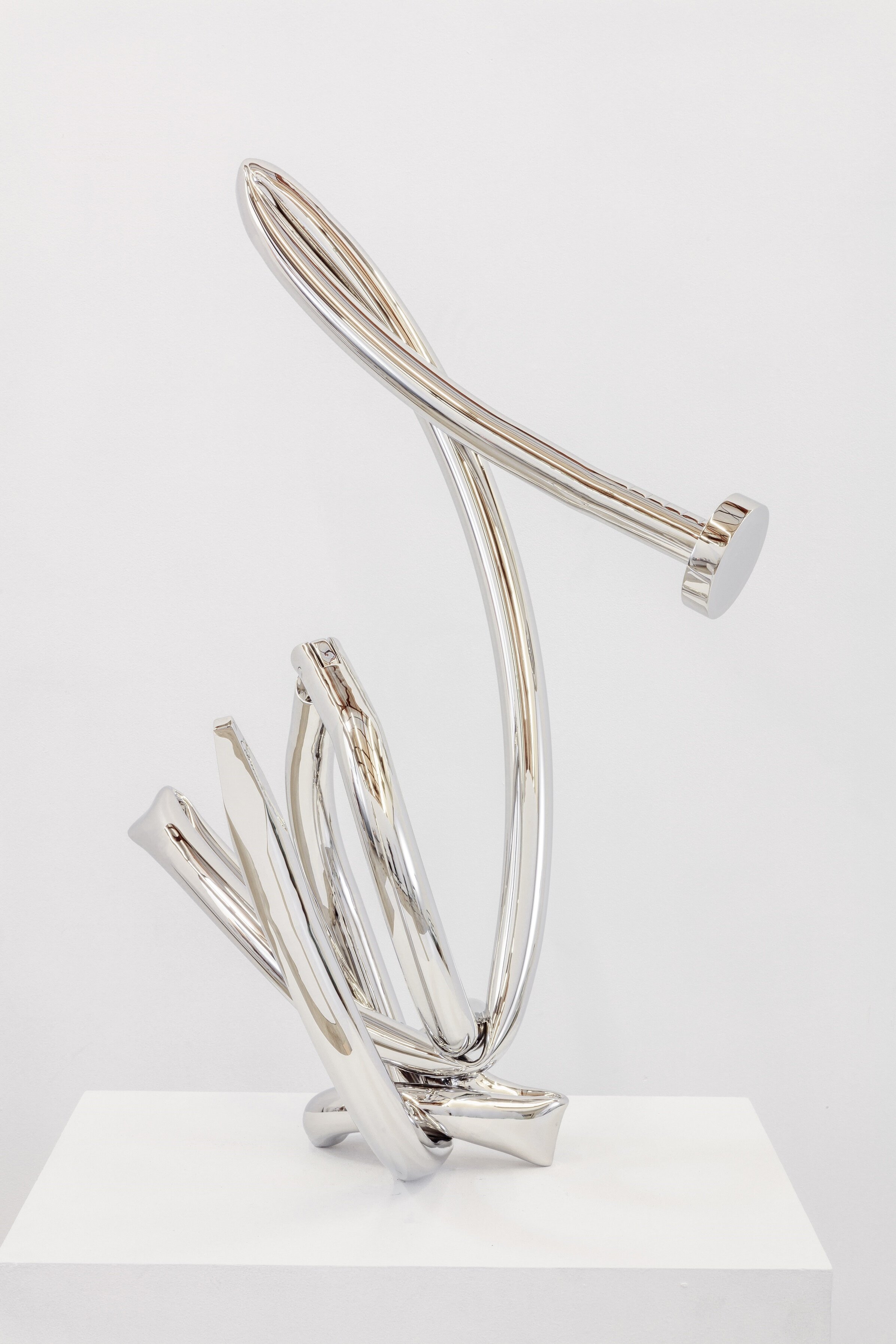
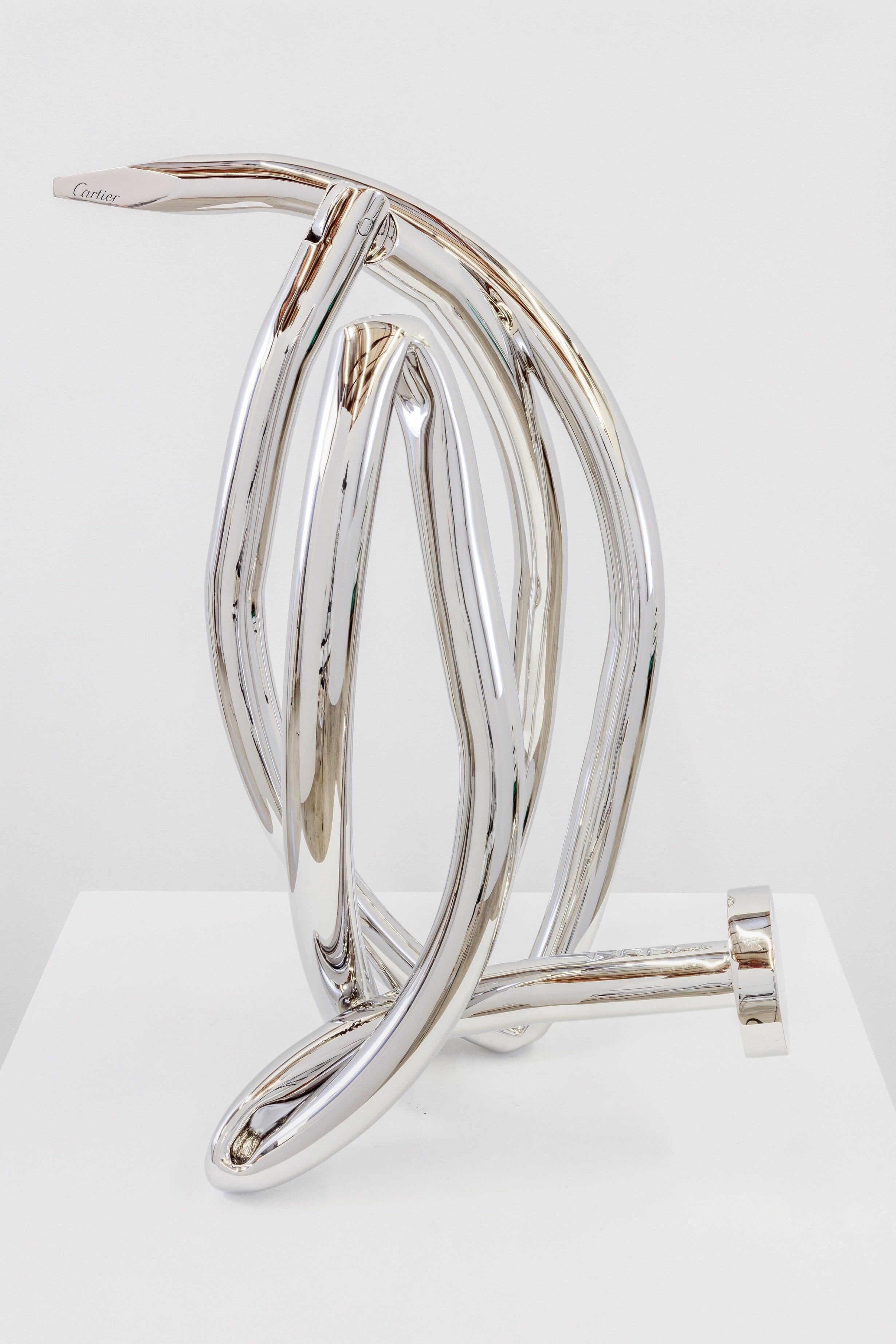
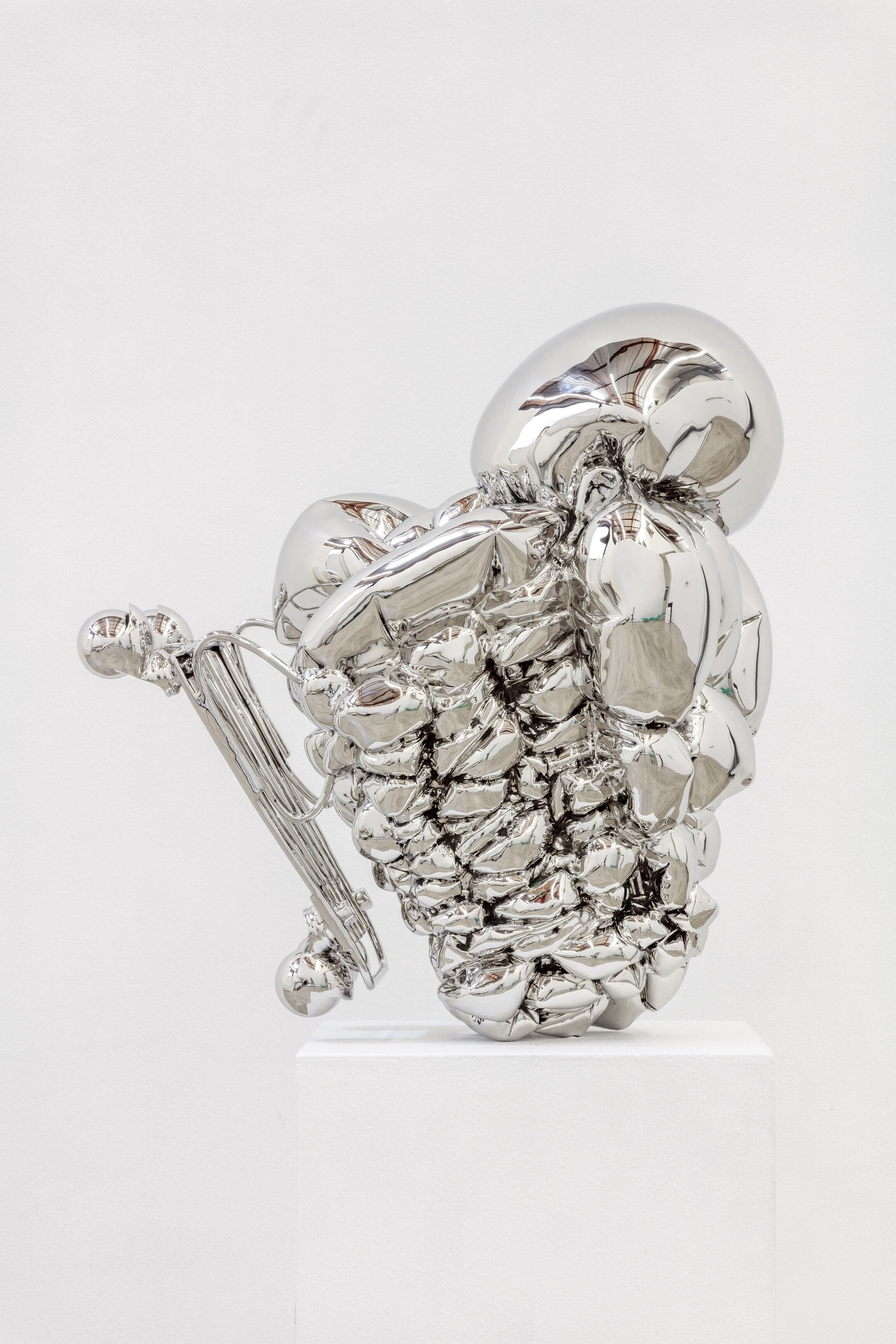
© Joel Morrison. Photo Credit: Elad Sarig
"When Culture becomes nothing more than a commodity, it must also become the star commodity of the spectacular society," - Guy Debord
For almost two decades, Los Angeles-based artist Joel Morrison has sifted through the contemporary Western cultural landscape to spotlight spectacles of mass consumption. Abstracting figuration, the artist juxtaposes high-brow with low-brow to create his "ready-mades," resulting in a dystopian collision of culture and consumerism that is as humorous as it is critical. His slick stainless steel sculptures are collages of meat tenderizers, weather balloons, shopping carts, bubble wrap, studded belts, and luxury accessories fused together with tongue-in cheek references from art history and pop-culture.
CENTER OF THE UNIVERSE is an exhibition made up of nine new works, each representing a planet in Earth's solar system. Morrison turns his sharp and critical eye in a new direction and submits metaphorically to the world of luxury and art, while using the metaphor of an unpredictable expanding universe with no traceable center. The acceleration of the art market has transformed art from a cultural object into a spectacle of Veblen goods: Status symbols and luxury objects that connote wealth and taste. Jewelry and accessories from luxury brands are contrasted with discarded objects and every day consumer items. In appropriating luxury items and displaying them in an exhibition space, consumption becomes an aesthetic experience and a spectacle that takes on religious connotations. Like fetish objects, the works are placed on pedestals in the exhibition space to be worshipped and admired, enabling communication to take place between the viewer as consumer and arts as luxury.
Whilst Morrison explores the idea of art collecting and luxury consumption as spectacle, he also conflates this with the idea of fetish, both as an object with magical qualities to be valued, worshiped and collected and as erotic fixation. Fetish accessory cuffs, studded collars, and bondage robes are playfully incorporated in a number of the works: Visual puns alluding to our subservience and devotion to consumerism, and to what Karl Marx termed "commodity fetishism."
The artist plays with the idea of Japanese kinbaku, or bondage rope binding in Bubble Wrapped Plank in Bondage, 2018 (Venus). A bubble-wrapped plank tightly bound with packing tape leaning against the wall is a riff on Man Ray's "Venus Restauree" 1936. Hermes, 2018 (Mercury) is a classical bust of the God Hermes the God of consumerism, trade, and border crossings is placed atop another stack of fetish collars, meat tenderizers and donning an enlarged iconic Hermès studded silver cuff around his Neck. Panther Head, 2018 (Pluto the dwarf planet of ice) with its mirrored steal cut diamond shaped facets also supported by a stack of studded fetish collars symbolizes submissive status in a BDSM relationship. The iconic Cartier Panthère ring, most famously associated with rapper Jay-Z has been enlarged and placed over the head a bust. The bust peers out of the jaws of the panther and we are left uncertain which object in being consumed.
Critical theorist Guy Debord, observed, "When culture becomes nothing more than a commodity, it must also become the star commodity of the spectacular society." Morrison's sculptures are the star commodity in a space of culture and commerce. But, one does not just look at the spectacle he has created, they become part of it. Drawing on Los Angeles Finish Fetish and the light and space movement of the 1960's, Morrison manipulates the sculptures' surface to capture and reflect light in the surrounding space, becoming dynamic compositions of light and color. However, the reflective surface also holds a mirror to the viewer who becomes part of the spectacle of consumption and part of the commodity on display.
Diane d'Arenberg
